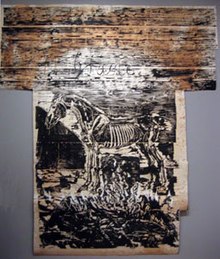
"If there were no death, there would be no rebirth," the German artist Anselm Keifer, whose work is experiencing a bit of a renaissance in the West, remarked in a recent interview. Quite. Even if we do not center this thought in a religious perspective, we still see that Keifer's remark recognizes the embedded rhythms of the universe. Throughout the breadth and depth of the cosmos, nothing, be it a star, lion, or human being, can be born without someone or something, somewhere and somehow, experiencing diminishment of some kind.
For anyone familiar with the second law of thermodynamics, which tells us that the total amount of matter and energy in the universe is constant, and that therefore when energy is lost, matter gains, and vice versa, this may not be a big surprise. On the other hand, the immutable factuality of this law simply affirms Keifer's point: unless we live in a completely static universe (and what kind of a cosmos would that be?), we will confront, every moment of every day, this cycle of death, in some fashion, and, in some similar fashion, rebirth.
Is some process of resurrection therefore imprinted into the fabric of the cosmos? Maybe. Resurrection between matter and energy, however, is one thing: from the most ancient of times, humans have believed in it. But resurrection into an absolutely new life is quite another.
Therein is the greatest mystery of all.
No comments:
Post a Comment